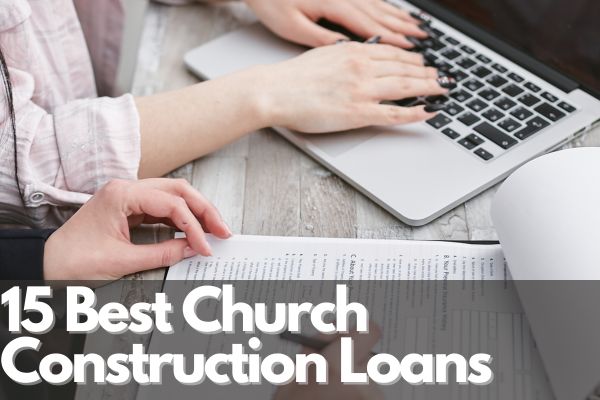A church loan is any financing obtained by a religious or faith-based organization (including Christian, Jewish, Muslim, or other religious groups) to assist with constructing, maintaining, renovating, expanding, or refinancing a property. A church loan can also be used to obtain funds to help improve cash flow and cover the day-to-day expenses of running a religious organization.
Faith-based organizations and churches are nonprofits, meaning they are tax-exempt and receive other benefits. A church typically receives funding from constituent tithes or offerings, grants, or another financing from their overarching religious affiliations. Let’s see a few steps to consider on how to get a Church Loan in this article
Contents
10 Steps on How to Get a Church Loan
STEP 1. Assess the Need
First, you should consider whether your ministry’s need indeed requires financing. If your church has two or three complete services, planning for additional growth is a good idea, but you may not need to start a construction project immediately.
Before planning for a new facility, fully utilize your current space. Your church’s facilities may have underutilized areas that could be renovated to provide the required length.
Try adding more services, whether it’s a third Sunday service, a Friday service, or even a service on a Wednesday. Providing services on different days and times allows more people to attend. If you need a church loan, use these three sources of funds strategically to cover the cost of your project: cash reserves, the money you can raise, and money you can loan.
STEP 12. Do your research
Don’t just take a loan from the first lender you find. Check to see if the bank or financial institution has your best interests in mind and that their loan programs meet the needs of your church. Look for competitive rates and loan programs tailored to your church’s needs, and make sure your lender is an FDIC member. Also, be wary of balloon payments, which may force you to refinance your loan every three to five years, regardless of your need.
STEP 3. Know your credit score
A financial institution will use your business credit score to determine whether or not you qualify for a loan. You can learn about your company’s credit score and how to improve it.
STEP 4. Gather your financial information
Just because you’re a religious organization doesn’t mean a bank will take your word for it regarding your financial standing on your loan application. You must know your total income, including tithing, rent, tuition payments, and any debt you have, such as an existing loan.
STEP 5. Choose Wisely
When selecting a potential lending partner, there are numerous factors to consider. Spend some time researching lenders. When you find a potential partner, share your vision for your ministry and ensure that the lender understands your growth strategy and goals.
Remember that you’re doing more than just borrowing money; some of the interest from your payments will be donated to the causes and organizations supported by your bank or financial institution.
It is critical to forming a partnership with an organization that understands your specific needs as a church and shares your values.
“Money is powerful, and it should be tied to the right sources,” a pastor once said.
STEP 6. Ask Questions
Take into consideration that your lending institution will be your partner for years. Since church loans are different than commercial loans, having a lender that understands church lending can be a substantial benefit. Please inquire with the financial institution about their experience working with churches.
Many church leaders and ministers prefer to work with a lender who shares their values. Still, several financial institutions use their profits to fund causes that contradict those fundamental Christian values. Don’t hesitate to ask what causes or organizations the financial institution supports.
STEP 7. Smart Planning
Don’t be afraid to use your imagination. Many churches buy and renovate existing buildings, such as storefronts, offices, or warehouses, and other churches construct entirely new structures to meet their specific requirements.
Whatever path you choose, always keep your church’s vision in mind.
A church construction or expansion project should align with the God-given vision for the future of your church. Avoid starting a project to solve an immediate problem, such as a lack of space.
STEP 8. Borrow With Discretion
Recognize that some participants of your church may be unhappy with the prospect of borrowing. The initiative might be better if you’re only interested in a loan for “comfort” or “stylistic” reasons, paying cash or through the capital. When applying for a loan, plan how the funds will be used to expand your ministry.
STEP 9. Organize Your Finances
Finding someone willing to lend you money at a financial institution will be difficult if your finances are not arranged. Lenders will request a cash flow statement. When they consider lending to your church, they are taking a risk, so keeping accurate and detailed financial reports will make the process easier for all individuals involved.
STEP 10. Get to Know Your Lender
Learn about your lender. Ask questions and share your vision. Because of this decision’s magnitude and financial impact, you want to ensure you’re both on the same page before you commit to funding ministry growth.
In conclusion, remember that Church financing is a strategic tool that can benefit growing churches. Remember that while obtaining funds at a reasonable rate is important, so is selecting a lender who understands ministry, shares your core values, and will be a long-term partner in the growth of your church.






![5 Best Commercial Loans For Churches [Apply Now] 5 Best Commercial Loans For Churches](https://www.bibleversesnow.com/wp-content/uploads/2023/02/5-Best-Commercial-Loans-For-Churches.jpg)